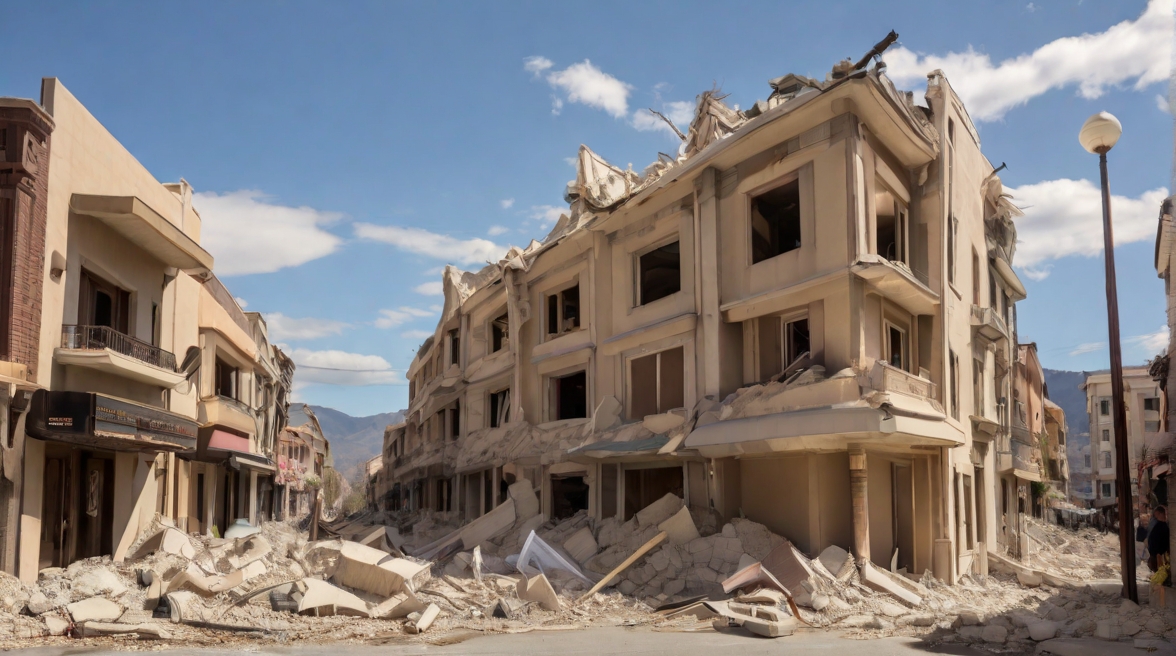
The Earth trembles, buildings sway, and fear grips our hearts – earthquakes, a force of nature we’ve learned to respect and fear. But what if I told you some earthquakes weren’t whispers of tectonic plates shifting, but tremors born from our actions? These are human-made earthquakes, also known as induced seismicity, and their rise is a growing concern in our ever-evolving relationship with the Earth.

While earthquakes have rocked humanity for millennia, the concept of human-made ones is relatively new. Our activities, from extracting resources to disposing of waste, are increasingly intersecting with the delicate dance of underground pressures and fault lines. This article delves into the key factors behind human-made earthquakes, shedding light on the activities triggering these tremors and the ongoing efforts to mitigate their impact.
The Culprits Behind the Tremors:
Several human activities have been linked to induced seismicity, each carrying its own set of risks and complexities. Here are some prominent culprits:
- Fluid injection: Injecting fluids underground is a common practice in various industries, including wastewater disposal, hydraulic fracturing for oil and gas extraction, and enhanced geothermal energy production. These fluids can increase pore pressure within rock formations, potentially lubricating pre-existing faults and triggering slip, leading to earthquakes.
- Mining and quarrying: Extracting resources like coal, minerals, and rock aggregates often involves disturbing underground structures and creating cavities. This can destabilize surrounding rock formations and trigger earthquakes, especially in areas with pre-existing geological vulnerabilities.
- Reservoir construction: Building large dams and reservoirs can significantly alter the distribution of weight on the Earth’s crust. This change in pressure can reactivate or trigger faults, leading to earthquakes in some cases.
Key Factors That Amplify the Tremors:
Not all instances of these activities result in earthquakes. The likelihood and severity of induced seismicity depend on several key factors, including:
- Geological conditions: The presence of pre-existing faults, the type of rock formations, and the level of stress within the subsurface all play a crucial role. Areas with naturally stressed, fractured rock and a complex network of faults are more susceptible to human-induced earthquakes.
- Injection parameters: In fluid injection activities, the volume, rate, and pressure of the injected fluids significantly impact the risk of induced seismicity. Higher volumes and pressures, along with rapid injection rates, increase the likelihood and intensity of tremors.
- Monitoring and mitigation: Implementing robust monitoring systems to track seismic activity and adjusting injection parameters or activities based on real-time data can significantly reduce the risk and manage potential tremors.
The Ripple Effects: Mitigating the Risks:
Human-made earthquakes pose a significant threat to communities and infrastructure. They can cause damage to buildings, disrupt critical services, and inflict casualties. Recognizing the gravity of this issue, scientists and engineers are actively developing strategies to mitigate the risks:

- Improved geological mapping and characterization: Understanding the subsurface geology, including the presence of faults and stress levels, is crucial for predicting and preventing induced seismicity. Advanced geophysical techniques and detailed geological surveys are playing a vital role in this aspect.
- Traffic light systems: Implementing real-time monitoring systems with “traffic light” protocols is proving effective. These systems track seismic activity and adjust injection parameters or halt activities altogether based on pre-defined thresholds, minimizing the risk of triggering or escalating earthquakes.
- Public awareness and education: Educating communities about the potential for induced seismicity, its causes, and mitigation strategies is vital. This empowers individuals to be informed about potential risks and fosters better communication with responsible parties in case of tremors.

Our Responsibility: Moving Forward with Caution:
As we advance technologically and delve deeper into the Earth’s resources, acknowledging the potential consequences of our actions is crucial. Human-made earthquakes are a stark reminder of the intricate relationship we share with our planet. By understanding the key factors behind these tremors, implementing robust mitigation strategies, and prioritizing responsible resource management, we can navigate this new frontier with greater caution and minimize the risks we pose to ourselves and our environment.
The Earth, after all, is not just a resource bank; it’s a delicate ecosystem, and every tremor we trigger is a ripple effect impacting its delicate balance. Let us move forward with respect, awareness, and a commitment to ensuring a future where our progress is not measured by the tremors we trigger, but by the harmony we cultivate with the ground beneath our feet. By embracing sustainable practices, prioritizing responsible resource extraction, and investing in innovative technologies that minimize our seismic footprint, we can chart a course towards a future where human ingenuity and Earth’s well-being go hand in hand. Each step we take towards responsible resource management and proactive mitigation strategies is a step towards a world where the only tremors we feel are the joyous celebrations of life, not the echoes of our own careless actions.

Let us remember, the Earth is not ours to dominate, but to steward. Let us tread lightly, listen intently, and act with the utmost respect for the delicate balance that sustains us all. Only then can we hope to navigate this shared journey with the Earth, leaving behind a legacy of harmonious co-existence, not one marked by the tremors of our recklessness.

Leave a Reply